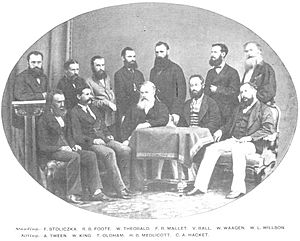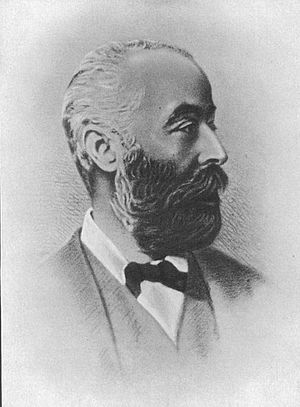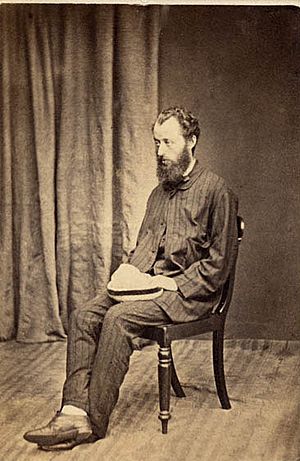Henry Benedict Medlicott facts for kids
Henry Benedict Medlicott (born August 3, 1829 – died April 6, 1905) was an Irish geologist. Geologists study the Earth's rocks, landforms, and history. Medlicott spent much of his life working in India. He helped write an important book about India's geology. He is also famous for creating the term "Gondwana". This word later helped scientists understand the idea of Gondwanaland, a supercontinent that existed long ago.
Early Life and Education
Henry Benedict Medlicott was born in Loughrea, County Galway, Ireland. His father, Samuel Medlicott, was a church leader. Henry studied at Trinity College, Dublin, a well-known university. He also studied in France and Guernsey. He became very good at French and knew a lot about what French geologists were discovering.
In 1851, he started working for the Geological Survey of Ireland. This group studies the geology of Ireland. Later, he worked for the British Geological Survey. In 1854, he decided to move to India to join the geological survey there. He was also given a job as a geology professor at Thomason College of Civil Engineering in Roorkee, India. His brothers, Joseph and Samuel, also worked in geology.
Career and Discoveries in India
Medlicott began his work in India in August 1854. He traveled with his mentor, Thomas Oldham, exploring different regions. In 1857, he married Louisa Maunsell. That same year, he volunteered to help protect Roorkee during a difficult time in India's history. He was even given a special medal for his service.
While in Roorkee, he studied areas like the Narmada Valley. He also explored the geology of the Lower Himalayas and the Siwalik Hills. With his brother Joseph, he helped figure out how the ancient Vindhyan region was different from the Gondwana region.
Medlicott worked in many parts of India, including Assam, the Khasi Hills, and Kashmir. In 1876, he became the head of the Department of Geology in Calcutta (now Kolkata). His title changed to Director in 1885.
One of his biggest achievements was co-writing the Manual of the Geology of India in 1879 with William Thomas Blanford. This book was very important for understanding India's geology. He also edited other scientific papers.
Medlicott is especially remembered for suggesting the name "Gondwana". He used this term to describe a specific type of rock formation in India. Later, another geologist, Edward Suess, noticed similar plant fossils (called Glossopteris) in many parts of the world. He then used the name "Gondwana-Land" to describe a huge ancient continent that included India, Africa, and Madagascar.
Achievements and Recognition
Henry B. Medlicott was recognized for his important work. In 1877, he became a Fellow of the Royal Society. This is a very high honor for scientists. In 1888, he received the Wollaston Medal from the Geological Society, another prestigious award for geologists.
He was also a Fellow of Calcutta University and served as President of the Asiatic Society of Bengal from 1879 to 1881. He retired in 1887 and lived in England, where he continued to study philosophy and theology. He passed away in 1905.




